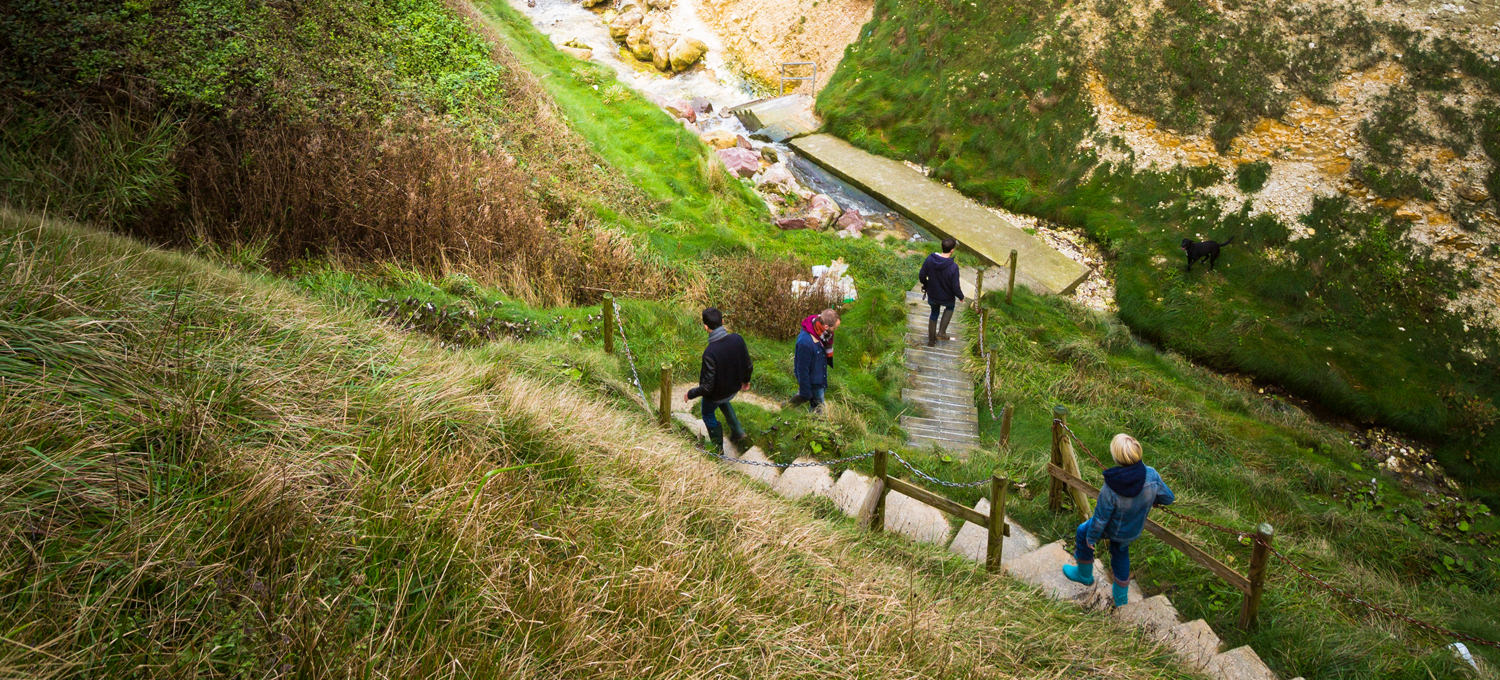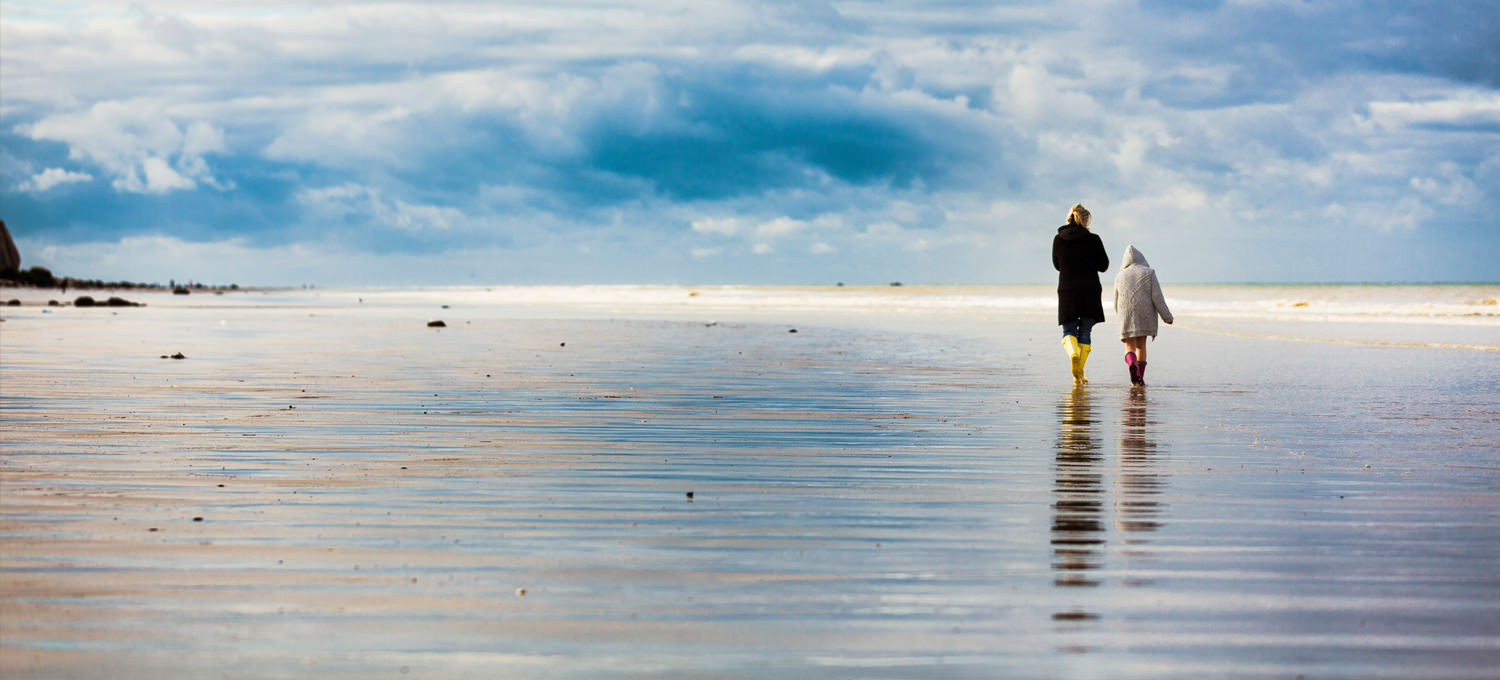Those who have not walked down one of the numerous "valleuses" (dry-hanging valleys), hidden notches scattered along the Alabaster Coast, do not know Seine-Maritime.
Let's go …
In front of you, the tearoom La Maison de Jules. On the opposite side, the shop Lin et l’Autre. Jean Ango's manor house is 500 metres (1640 ft.) to the east as the crow flies and the sea at the same distance to the west. Opposite the tearoom (a very good one by the way) which is also an art gallery, a little street draws you over. It leads to the sea. Between you and the sea, there is the Valleuse du Petit Ailly, one of the three dry-hanging valleys in Varengeville-sur-Mer. Look left, look right and voila, here you are in the Rue de l’Aumône.
First impression: the peace and quiet, only disturbed by birds singing and a chain saw cleaning up after the last squalls in the background.
On the way, take a quick look at the shop that the girls love and the
boys wink at. Lin et l’Autre is a veritable Aladdin's cave of linen products. Next to the fabrics and clothes, buttons, yarns, beads, ribbons and trinkets have filled every inch of the shop with a profusion of colour. The weather is nice. Even beautiful. Everything is clear. Even this stable smell that tickles your nostrils.
Varengeville may be the ultimate chic destination, it nevertheless remains a genuine Norman village!
The sea, straight on
You are now wandering around. A wooden sign points to “la mer” (the sea), “musée Michel Ciry” (Michel Ciry Museum), the painter of human emotions who has lived and worked here. Walking is the best (the only?) way of exploring and experiencing the intimacy of a "valleuse". In those two-million-year-old geologic formations eroded by freshwater, you'll have to slip silently down if you are on your own or happily converse if you've got company. In the past fishermen and pebble pickers have used these narrow defiles as their path of toil.
Nowadays, the "valleuses" are especially enjoyed by visitors who, just like me, are guided by the simple, natural beauty of the place.
On both sides, the path is lined with hedgerows planted with beech and hazelnut trees. These earth ramparts covered in moss and vegetation form the labyrinth that shapes the secret heart of the village. Walk by some pretty houses and then cross the Rue Grange de Conches. The sea is straight on. A few more steps and here you are, facing the open sea, still concealed behind the trees and the rounded clifftops.
A green tunnel
The path starts to go down. On both sides of the vale that starts to take shape, there are large pastures planted with tall trees. A few broken branches testify to the strength of the wind that swept along the coast. Pigeons are flying away in the bright sky. No cars. You are immersed in the prevailing tranquillity. A refreshing sense of well-being. Dogs are barking in the background. On your right, one last house would like to pass off as an Anglo-Norman manor house. And here you are, in the wood. The ultimate protection against the raging sea. Screeches of jays and blackbirds replace the chirping of sparrows in twisted and tangled tree branches. In spring, the landscape filled with wild daffodils blooming with yellow and white flowers is pure wonderment!
You'll walk by a huge trunk that had been cut by men and smoothed over the years. One last curve. Two troughs filled with water for the animals bathed in the sun, and suddenly, the sound of the waves. Its murmur is sweet music to your ears. You catch yourself walking faster. The final section of the path is a veritable green tunnel that leads down to the beach. On the right is the GR hiking trail to Pourville. There are ferns everywhere around you, and brambles spurt well over the head like fountains. You can't miss the first appearance of the cliff. With a ray of sunshine, it radiates off-white brightness veined with yellow. Higher on your right, a hole in the cliff must have served as a shelter more than once. An information panel explains that only fishermen, artists and film directors are allowed vehicular access…
On the strand
And voila, you can see the whole cliff facing the immensity of the sea. The colour of the water and the muffled roar of the Channel make it possible to discern the remains of its last wraths. On the sand, the water has dug thousands of tiny trifling trails. It runs down from the cliff, breaks through the sand and then flows to the open sea. It is low tide. The beauty is massive and wild. Unspoilt. Within reach on the right, there is Pourville. Further away, Dieppe. And over there, in the far end, Le Tréport where the most remote cliffs start to fade away into the Somme department in Picardy. Under your feet, the beach is full of mussels. At high tide, these delicious treasures are sold by the car park. Flint covered with seaweed is shattered; cut and sharpened.
Green on the outside, black on the inside. The cliff-shore platform is swarming with molluscs, crustaceans and anemones. A beautiful world in a fragile environment. Be careful not to trample, but skip lightly over it. What if this was happiness?






